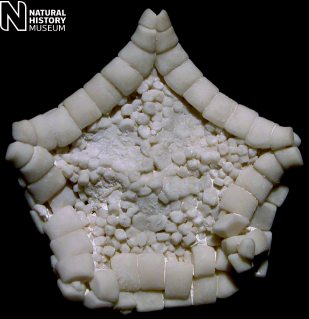 A A |
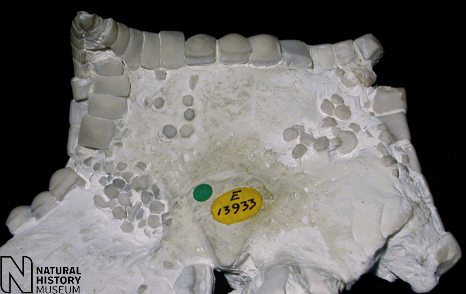 B B |
|
Recurvaster blackmorei |
A large asteroid from the White Chalk, articulated remains of which are scarce in the UK but common elsewhere in NW Europe (e.g. the Maastrichtian of Denmark). Recurvaster is believed to have derived from from Metopaster parkinsoni during the Santonian, and isolated ossicles of R. blackmorei can be virtually indistinguishable from those of M. parkinsoni. Complete specimens, however, can be readily distinguished, by examination of the arm tips; Those of Metopaster have an enlarged ultimate superomarginal, with several corresponding inferomarginals; Those of Recurvaster by contrast have an equal number of tapering superomarginals and inferomarginals. (Compare Recurvaster and Metopaster).
 A A |
 B B |
1). (A) Aboral surface of a small but exceptionally preserved individual (x3.6, BMNH (British Museum (Natural History) London) E20275); (B) Aboral view of the large type specimen (x1.4, BMNH 13933); both Early Campanian, East Harnham, near Salisbury, Wiltshire, Blackmore Collection. Images © 2005 The Natural History Museum, by kind permission.
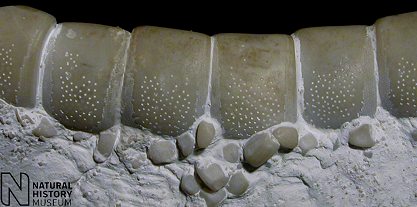
2). Detail of the marginal frame of the type specimen (x4.0). The outer surface of the marginal ossicles has a raised and pitted central area, with a recessed border. In this view, without the arm-tips, the specimen is indistinguishable from Metopaster parkinsoni. Image © 2005 The Natural History Museum, by kind permission.
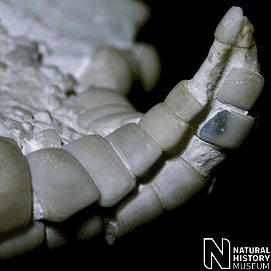 A A |
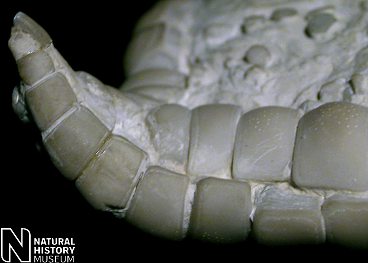 B
B |
3). Right (A) and left (B) lateral (side) views of an arm-tip of the type specimen. Images © 2005 The Natural History Museum, by kind permission.
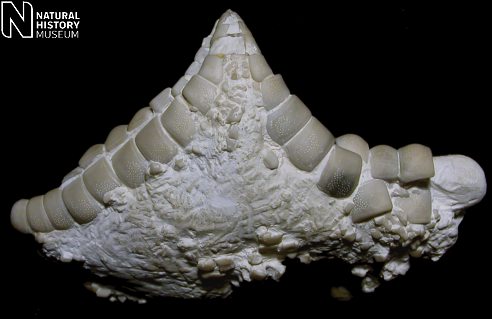
4). Low angle view of the oral surface of the type specimen. Image © 2005 The Natural History Museum, by kind permission.